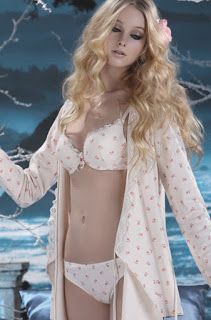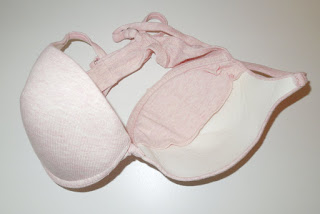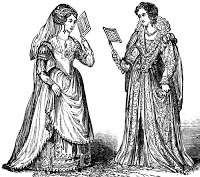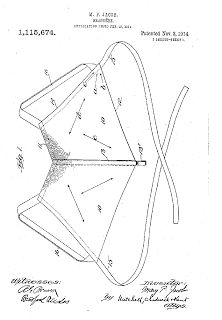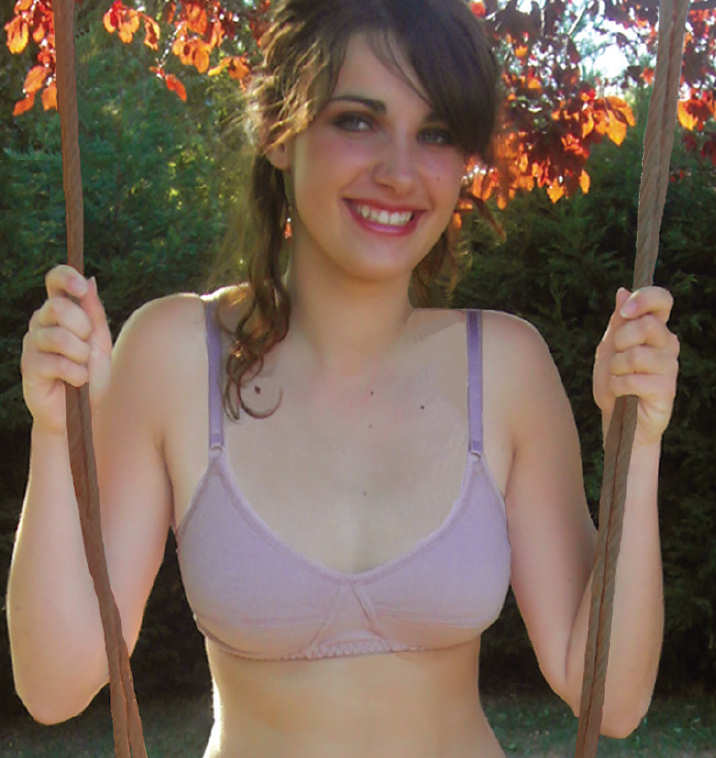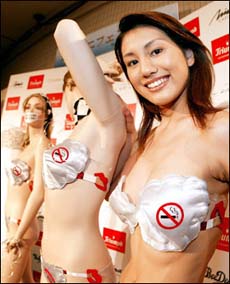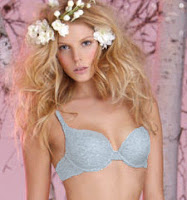Why don’t USA manufacturers make organic cotton bras? We get this question a lot. There are actually a number of great companies, like Blue Canoe, that make soft bras, bralettes, and yoga bras in the USA. However, you won’t find padded, molded cup or underwire bras made in the USA. When we started making our own line of organic panties in Oregon, we thought we might try our hand at making some bras as well. What we found is that bra making takes expensive specialty equipment. Most sewing manufacturers can’t afford to buy this equipment unless they are using it regularly. It’s certainly possible that somewhere in the USA there is a small manufacturing company that can make these types of “constructed” bras, but if there is, we weren’t able to find them. So let’s break down types of bras and how they are sewn.
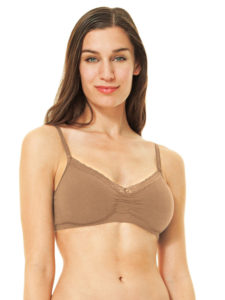
“Soft Bras” or Bralettes
This is the category of bras made without molding, internal padding or underwire. The bralette is very popular these days, and it’s the easiest bra to sew. There are bralettes that pull-on over the head, those that have the addition of a hook-and-eye back closure, and even a few that are sewn with internal pockets for use with removable padded cups. The removable cups offer the option of a padded bralette such as the Adjustable Soft Bra, shown left, without the expensive equipment needed for internal padding. The hook-and-eye back closure takes more sewing than a pull-on style and tends to make the bras a little more expensive, but they don’t require any specialty equipment. The entire hook-and-eye piece is often manufactured separately and bra companies just need to buy the pieces and sew them in using a standard sewing machine. The Avignon Triangle Bra shown below is an example of the hook-and-eye closure bralette.
Bralettes can be sewn in almost any sewing shop or factory and can even be made at home. A standard sewing machine pulls most of the weight for these bras, though a cover-stitch machine can also be beneficial.
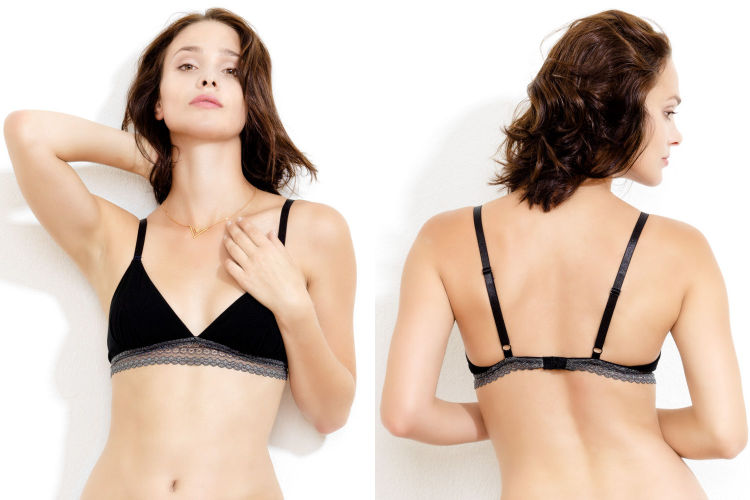
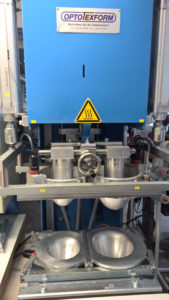
Molded Cup Bras
All of the bralettes described above will have some sort of seaming, pleating or ruching in the cups to provide shape. Molded cup bras provide shaping without any seams. Since this type of bra looks particularly good under t-shirts or tight knit tops, they are often referred to as t-shirt bras. The molded cups require an intricate piece of equipment that stretches the fabric to the exact shape of the cup. Since you need a separate “mold” for each cup size, the equipment cost can get expensive. I had the opportunity to snap a few photos of a molding machine at Swegmark’s offices in Sweden along with the resulting molds. As you can see in the image right, this machine creates only two sizes, so additional machines or larger machines are required based on how many bra sizes you want to create. Swegmark has been making molded bras out of polyester fabric for years, but when I visited this summer they were working on their first fair trade, organic cotton molded bra. We look forward to having those available for sale in early 2018.
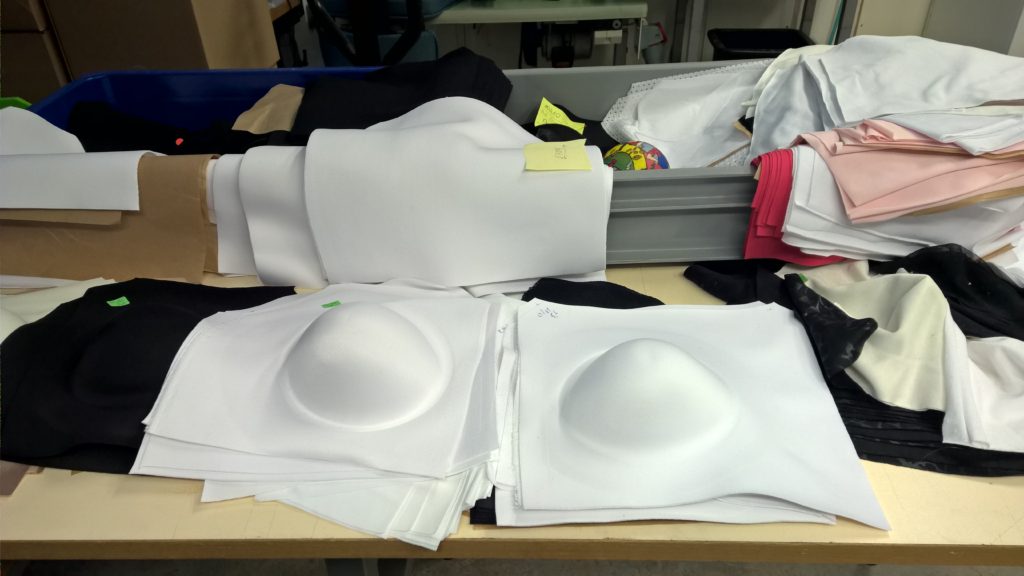
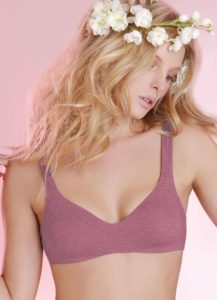
A molding machine can also be used to create molded padding for bras that have internal padding rather than removable padded cups.
The Alba No Wire Bra (shown left) from Love Nature is an example of a no-wire bra with molded, seamless cups. This one has molded cups without padding. We had sent a number of request to Love Nature to add an a A-cup bra to their size range before they went out of business. At the time they told us they didn’t have any molds for an A-cup and this is what they meant. It wasn’t just re-working the sizing to fit an A-cup, they would have had to buy more physical equipment. In their case, they didn’t think the sales would make up for the large upfront investment.
Underwire Bras
The addition of underwires to bras allows them to shape and support the breasts much better than a no wire bra. Additionally, it is possible to use the wire to support cotton internal padding rather than the more common polyester/nylon padding. There were rumors stared by a book in the 90s that led some people to believe that underwire bras caused breast cancer. However, that myth has been well debunked. You can read about it here or here or here.
We still sell a lot of underwire bras, particularly padded, underwire bras and it turns out that adding in the wire requires yet another piece of expensive machinery. While I’ve never seen one in person, I have been able to find them online. An underwire bra machine such as the one shown below runs about $8,000-$10,000.
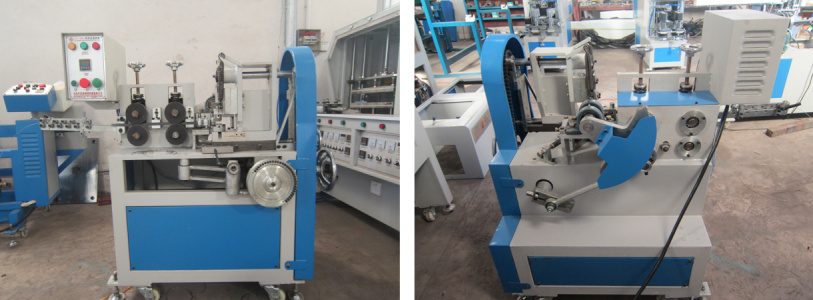
Conclusion
Finding the perfect bra for you always takes a little effort. While we would ideally love to offer a wider variety of bras that are made in the USA, the downturn in American textile manufacturing has left us with few, if in fact any, companies that can make seamless cup or underwire bras. In fact, the equipment is so costly that many of the manufacturers we work with are actually bra designers and still outsource most of the construction and sewing to larger facilities that have all of the needed equipment. Despite that, we are still thrilled with the variety and quality of organic and natural fabric bras that we are able offer, and hope you can appreciate all of the work that goes into making them. For our little company, though, we will not likely get into bra manufacturing any time soon.

